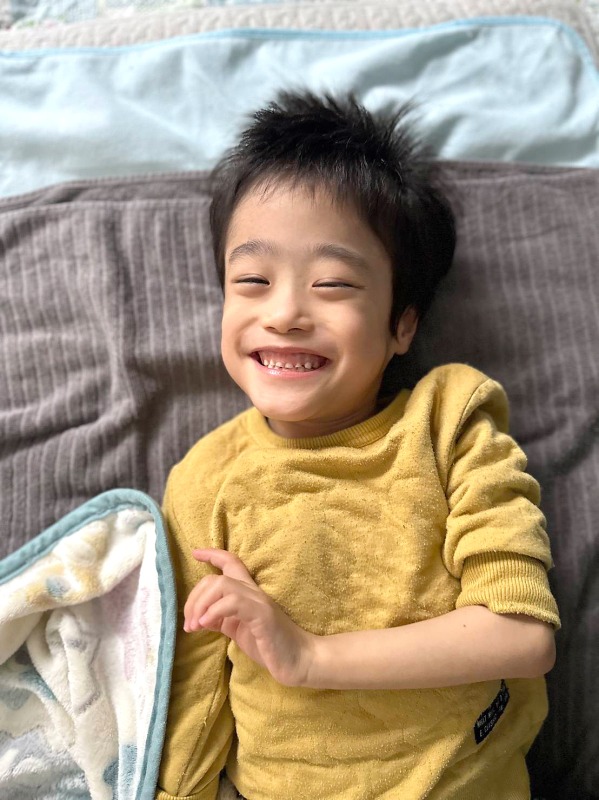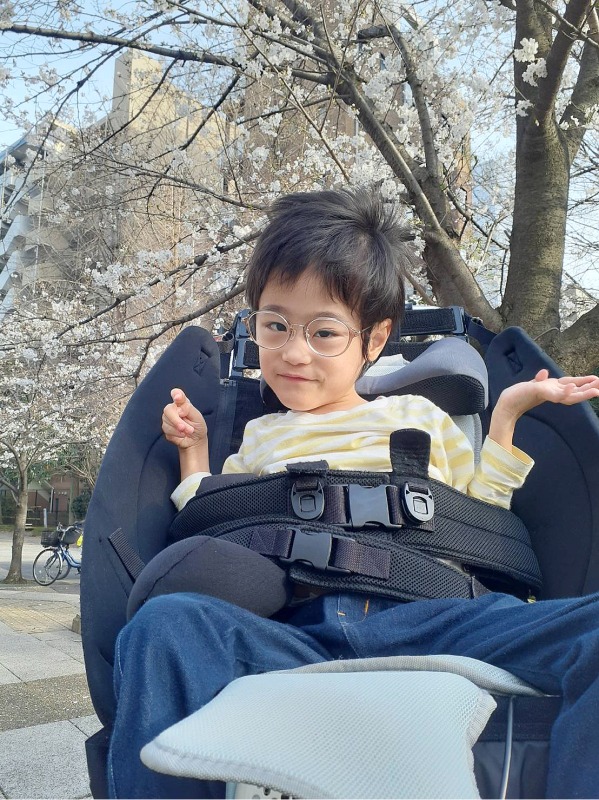A Symphony of Joy: Asato’s Journey and the Fight for Disability Representation
Hello everyone! I’m Daniela, an intern at Colorful Kids Models with a passion for inclusion and innovation. Diagnosed with diabetes at a young age, I’ve always understood the importance of celebrating diversity and creating opportunities for everyone to shine. Colorful Kids Models’ mission deeply resonated with me, and when the chance to write this blog arose, it felt like a chance to contribute to something truly special. This blog is a glimpse into their world, and I hope as you read it, you’ll feel the same spark of inspiration that filled me while writing it.
_____
In today’s interview, we meet the amazing parents of Asato, a bright young boy who experiences the world differently. Their story isn’t just about navigating challenges, it’s about celebrating Asato’s individuality and normalizing the beautiful diversity of our world. Read on and get carried away into their world.
_____

How did you first discover Colorful Kid Models?
In 2021, during the COVID-19 pandemic, we stumbled upon Colorful Models through social networking sites. The organization’s mission to reduce discrimination and break down barriers by raising awareness about children with disabilities deeply resonated with us. We were inspired by their vision of creating a more inclusive society where everyone can live as valued members.
What motivated you to become involved with Colorful Models and join their mission?
In 2022, we attended a photo exhibition by Colorful Models at the Higashikurume shopping mall. The children’s smiles were absolutely adorable and heartwarming. It was evident that they were cherished and loved. This moved us profoundly and motivated us to join the Colorful Models and become part of this movement.
In your opinion, why is representation in the modeling industry particularly significant for children with disabilities, and why do you think it’s essential?
Representation in the modeling industry is crucial for children with disabilities because it normalizes their presence in society and helps break down stereotypes. By showcasing these children, we send a powerful message that they, too, are beautiful, capable, and deserving of recognition. It’s essential for fostering a more inclusive and accepting world.
What types of messages do you want society to understand through modeling?
We want society to recognize that children with disabilities experience the full range of human emotions—joy, anger, sorrow—and have strengths and weaknesses just like anyone else. They have good days and bad days and are fundamentally no different from other children. We shouldn’t discriminate against them or ignore their existence. Nor should we give up on them if they struggle with something. They don’t need unnecessary special treatment from others; they simply need to be accepted as the human beings they are. We would be happy if people could understand and embrace this perspective.
Can you share a bit about your son? What are some of his talents and interests, or activities he enjoys in his free time?
Our son, Asato, loves songs and music. He can listen to classical music for quite some time, completely absorbed and quiet. He likes stimuli that he can receive by hearing and he’s particularly fascinated by auditory information, such as train announcements. He even remembers the stations on the Yurakucho Line. His passion for these interests brings him a lot of joy.

Could you share with us the experience of raising a disabled child, including both the challenges you’ve faced and the moments of joy and fulfillment?
Raising Asato has given us a new perspective on life. Since his birth, we’ve learned so much about the challenges faced by minorities with disabilities and illnesses through our interactions with medical and welfare services. This experience has taught us about the resources available to help and support them. Interacting with people from diverse backgrounds has enriched our understanding and positively impacted our own work.
As a piano teacher, I’ve become more understanding and patient with my students. When something goes wrong, I try to understand their background and relationship with their parents, rather than getting angry. Working with children allows me to apply what I’ve learned from raising Asato.
Talking about challenges one of the main difficulties we face is communication, as Asato is non-verbal. It can be difficult to understand and convey his intentions. We pay close attention to his facial expressions, hand signs, and babbling, treating them as valuable communication rather than a routine. We also work with a speech therapist for additional support. Despite these challenges, the joy and fulfillment we get from seeing him happy and engaged in his interests are immeasurable.
Education about disabilities is crucial for raising awareness. Could you please tell us about your child’s specific disability and its characteristics to help broaden understanding?
Asato has cerebral palsy. He was born weighing 900 grams and had underdeveloped lungs, requiring a breathing machine for the first two years of his life. Initially, he spent six months in the hospital and couldn’t come home. It was challenging to go out because we always needed to carry the breathing machine. Fortunately, his lungs have improved, and he no longer needs the machine.
What other challenges come with Asato’s disability that you face?
Asato uses a wheelchair, which makes accessing many places difficult. Although Tokyo offers more services for disabled kids than rural areas, there’s still a lack of support. He needs all his food blended, so we prepare his meals at home and can’t easily order food for him at restaurants. Some restaurants now offer a blending service, which is a great help. There are also organizations created by mothers that share information about accessible restaurants.
Another challenge is that Asato can be loud, and his large stroller doesn’t fit in every restaurant. As he grows, we’ll face new problems, but for now, we often go out. Tokyo has adapted buses for wheelchairs, which makes getting around easier. Living in central Tokyo, we have more options and face less discrimination compared to the countryside.
Lastly, what are your hopes and aspirations for yourself and for society by being part of Colorful Models? What positive changes do you envision?
There are still barriers to overcome. It’s normal to fear what we don’t understand, but that can lead to discrimination. The mission of Colorful Kid Models is to raise awareness about diversity and end discrimination. We want to eliminate these barriers. While there are small changes and efforts, like the SDGs, it’s not enough. We see progress, but we want to contribute to a future where disabled people can live independently without barriers.
Thank you so much for this amazing talk and for the opportunnity to meet you and your son Asato.
_____
The moment I walked into the room, I could feel the warmth radiating from a family filled with love. There was Asato, the cutest kid you could imagine, completely captivated by a cartoon on the screen curled up with a happy smile. As our eyes met, I saw a spark of pure joy and a spirit that felt undeniably special. Spending time with Asato and his parents was an incredible experience that will stay with me forever. A reminder of the pure love that Asato brings to the world. Meeting such special people is truly awe-inspiring so don’t miss our next interview featuring a remarkable mother with a story to share!
Check Daniela’s other articles:

